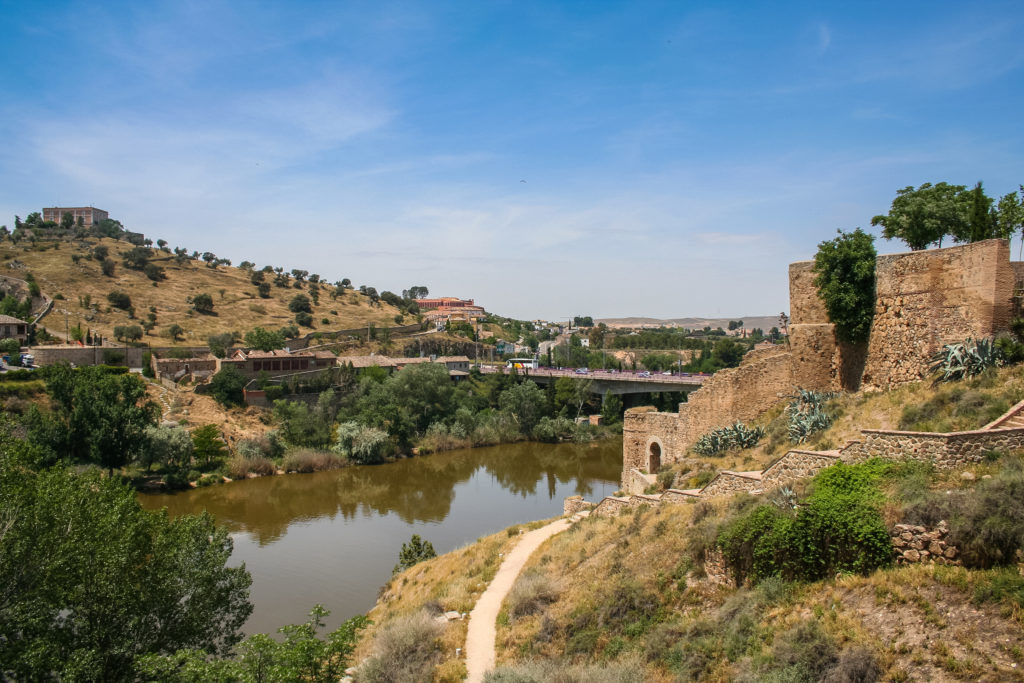The Tagus River is one of the most important rivers in western Europe and the longest river in the Iberian Peninsula. It starts in Spain, flows through Portugal, and ends in the Atlantic Ocean.
With a length of 1,007 km (626 mi), the Tagus River is the longest river on the Iberian Peninsula. The basin covers an area of 78,000 km2 (30,000 sq mi) making it the largest river basin in Spain and second-largest in Portugal.
The Tagus River has many diverse landscapes along its course as it passes through mountain ranges, valleys and plains. In its upper reaches, it flows through steep gorges while in its middle course it passes through vast plains such as Extremadura or La Mancha. In its lower course it runs through three great valleys: Alentejo, Algarve and Santarém Valley.
Throughout its course there are many dams for hydroelectric power providing energy for much of Portugal and parts of Spain. Its rich biodiversity includes numerous protected areas where native species like otters, kingfishers, wildcats and eagles can be found living among marshlands, oxbow lakes and wetlands.

The Tagus River serves as an important source of water for agriculture providing irrigation to local farms. With its beautiful landscapes and abundant resources it is no wonder why this important river has been so vital in shaping both Spanish and Portuguese history since ancient times!
The Tagus River is also a popular destination for tourism and recreation. Activities range from river cruises to kayaking, canoeing, and fishing. Visitors can explore the local culture, visit historical sites or simply relax in one of the many natural parks located alongside its banks.
The Tagus River is also a major transportation route as it connects many of Spain and Portugal’s largest cities such as Madrid, Lisbon, Coimbra, and Seville. It is therefore important for both countries’ economies and plays an essential role in their road infrastructure.
No matter what your reason for visiting this beautiful river is, the Tagus River promises to be an unforgettable experience! Enjoy the serenity of nature along with the centuries-old history of those who have lived on its banks over the years – providing an experience that cannot be found anywhere else in Europe!
Here are 10 Interesting Facts about the Tagus River:
- The Tagus is the longest river in the Iberian Peninsula and covers a length of 1,007 km (626 mi).
- Its basin covers an area of 78,000 km2 (30,000 sq mi), making it the largest river basin in Spain and the second-largest in Portugal.
- The Tagus is home to numerous species of wildlife including otters, kingfishers, wildcats, and eagles.
- It provides irrigation for local farms and energy for much of Portugal and parts of Spain with its hydroelectric dams.
- Along its course, there are many stunning landscapes ranging from steep gorges to vast plains like La Mancha or Extremadura.
- With many historical sites and rich cultural heritage, visiting the Tagus is a great experience!
- The Tagus plays an essential role in transportation by connecting major cities such as Madrid, Lisbon, Coimbra, and Seville.
- Popular activities include river cruises, kayaking, canoeing, and fishing along its banks– perfect for both tourists and locals looking for adventure!
- In ancient times it served as an important source of trade due to its proximity to the Atlantic Ocean – connecting Europe with African countries like Morocco and Tunisia!
- With many natural parks located along its banks you can have a peaceful getaway just steps away from civilization!
In conclusion, the Tagus River is a beautiful, vibrant, and culturally rich river with much to offer for both locals and tourists. From stunning landscapes and historical sites to exciting activities such as river cruises or fishing– the Tagus promises an unforgettable experience! With its natural beauty and its important role in Spanish and Portuguese economies – it is truly a gem of Europe.